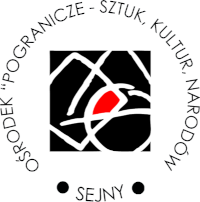We got to know Silesia through films, art and all the symbolic and material space with the memory of the past craftsmanship, rebellion or myths established by one authority coming after another. In this world, which is fascinating but difficult to understand and filled with paradoxes, a tale of an individual person was the supportive basis. Poets, activists and scholars whom we met both showed us contemporary, vivid Silesia together with its language, identity, challenges to come and extended our knowledge by a few viewpoints, narratives and approaches. It turned out that in order to get to know Upper Silesia, we need to meet people whose narratives will not encompass one story and one journey.
We visited Silesia for the second time in the beginning of April and, as previously, we were welcomed by Katowice’s Nikischschacht district, now a bit more famous, yet we were coming back to a different city, woken up by spring which in our Suwałki area was yet to come. There were also different visions of Silesian identity that people we met on our way faced us with. We got to know personal and family stories with which the history of Silesia was carried all over the map with changing borders. Our first meetings with Grażyna Bułka, the actress of the Silesian Theatre, and Wojciech Adalbert Glenski, a member of the Council of the Silesian Language convinced us that this is the historical moment for this particular territory. Silesian was freely flowing in the tales, it built the identity whose basis was openness to influences, movement and the time to come. These tales were well supplemented by another master of ours, Tomasz Różycki, a poet from Opole who is constantly on the move and whose attitude towards his place is tense. In this writer’s memory the universally Silesian tale of being on the move, of expulsions, resettlements, and the loss of individual nests worked in a particular way. The arbitrary historical map, the jargon of Lviv brought to Różycki’s home by his father and the ex-Germanness of Opole was gradually becoming the space of a homelessness, and the devotion to both the place and extirpation. The process of writing, reading can be conducive to the return and the redemption of what has been devoured by time. At the same time the poet’s tale was cut off from archeology and directed us towards what can be seen in full bloom, what we do not want and cannot see while tearing off each consecutive layer and reaching deeper into the mythical sphere.
With the map of Sillesian memory which was both open by being on the move and hurt by the borders falling down from above, we made our way looking for the Jewish traces in Upper Silesia. This is why we managed to visit Gliwice and Będzin where we were guided by Karolina Jakoweńko, the co-founder of the Cukerman Gate Foundation. These two cities, however they are neighbours, contain tales which are different and function in a bit different way for contemporary Jews. The Upper Silesian House of Remembrance is placed in the old, well renovated burial house and is located next to the cemetery which is unusual because of its two sides, the German and the Polish one, which adds to the complex history of German Jews. Paradoxically, but it happens so, the cemetery remains a vivid place if you think of the ancestors of the dead who arrive in Gleiwitz and find the matzevahs of their relatives which have been lost among the thickets and set against the singing of the birds and the plants that are densely growing among the trees, graves and against the walls. As for Będzin, it used to be ‘’black with gaberdine” and its principal aim is to tell the story about Polish Jews whose varied tradition dates many ages back. In Będzin, in one of the houses of prayer, the Cukreman Gate we could hear about one more memory about how places disappear, how the whole worlds disappear, about the searches of archeology which is a mission and makes it possible to redeem and build.
We finished our Silesian visit farther on, nearer the borders. Łukasz Galusek, who is an architect and the deputy of the director of the International Cultural Centre in Krakow told us about another borderland of this particular area which goes from Bielsko-Biała and Cieszyn. These are the places of yet another link which are shaped by the orderly protestant rationality and serene development but also the tension with the Catholic church. In Bielsko-Biała we could listen to professor Ewa Chojecka, an art historian, whose work has been based on places and the identity of borderline for decades. The last view of our visit was the panorama of Cieszyn which was standing next to the famous St Nicolas tower from which we could take a look at the Olza river, the near and the far roofs of city houses and, finally, the rising mountain chains, other countries and lands. After several days of meetings, talks, listening to histories and personal fates, such a perspective had an impact on us in a different way. To see something from above, even for a moment, in an illusional wholeness, with the stripes of land which cover the layers of the intertwined memory of the borderland. Theatre and music were a part of our visit, we saw ‘’The Divine” with Grażyna Bułka performing the main role and we listened to the works of Bruckner and Lekeau interpreted by the NOSPR orchestra. And even though it is a symbol of this particular narrative, it is also unusual to observe the movement of culture that jumps over the maps and borders of Silesia, makes it possible to remember, revive, open up the language and Silesian identity to the world and convince others that there are no clear dividing lines, nothing outside be it Silesia or the Sejny region, we are in the same centre of the world.


